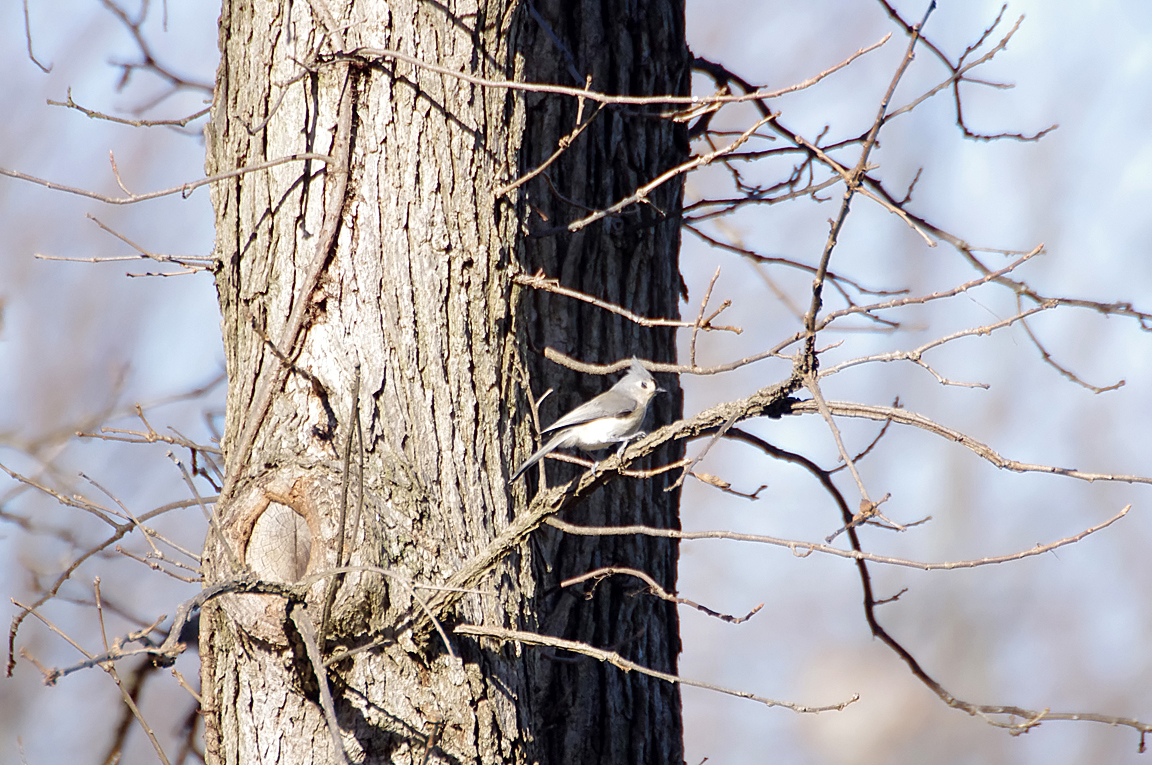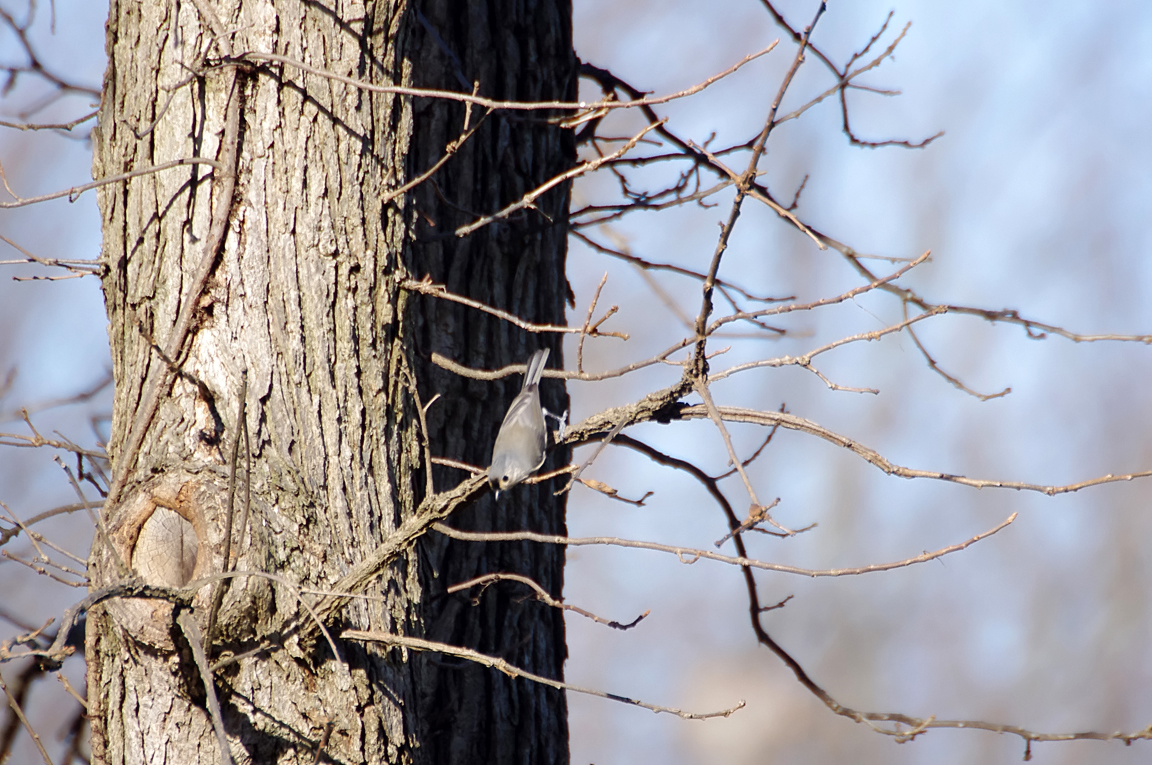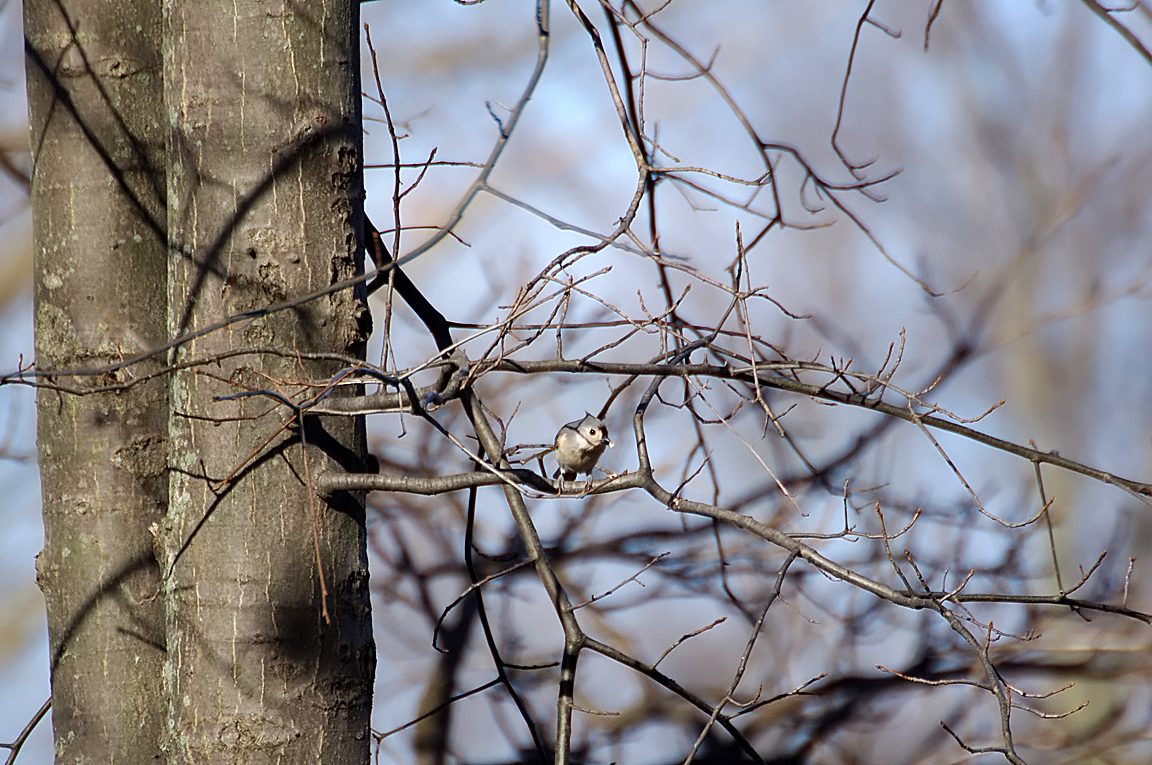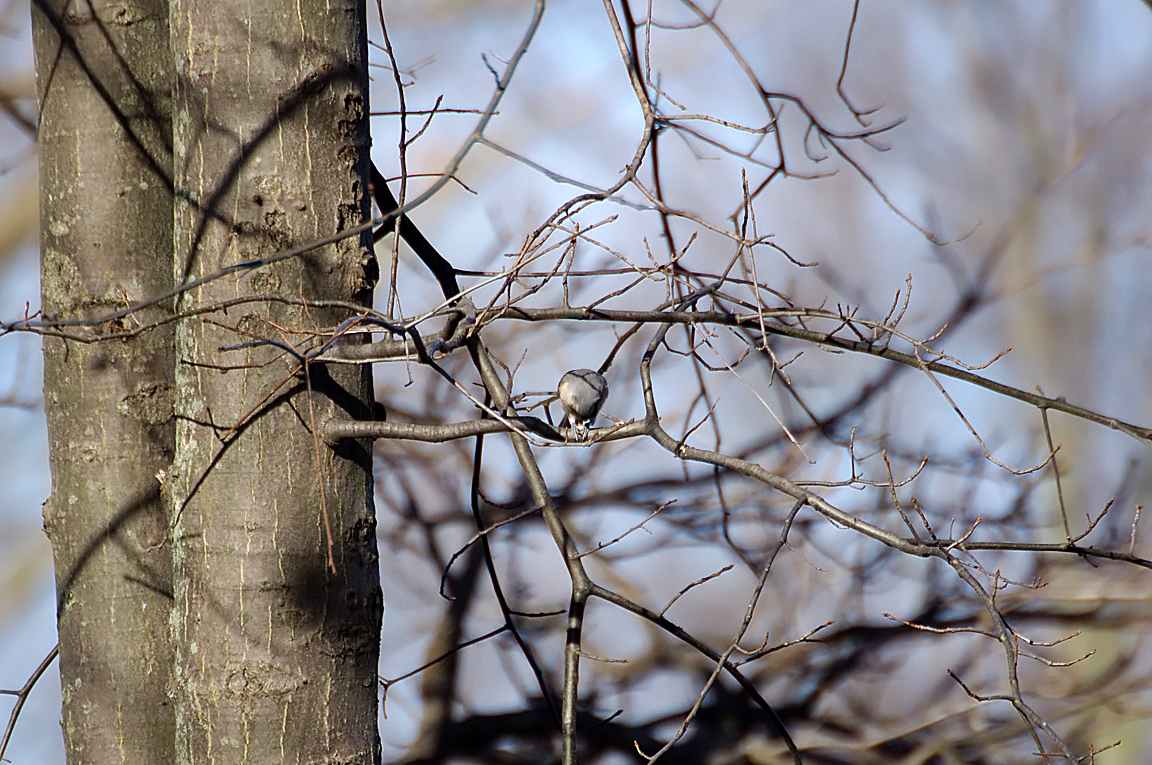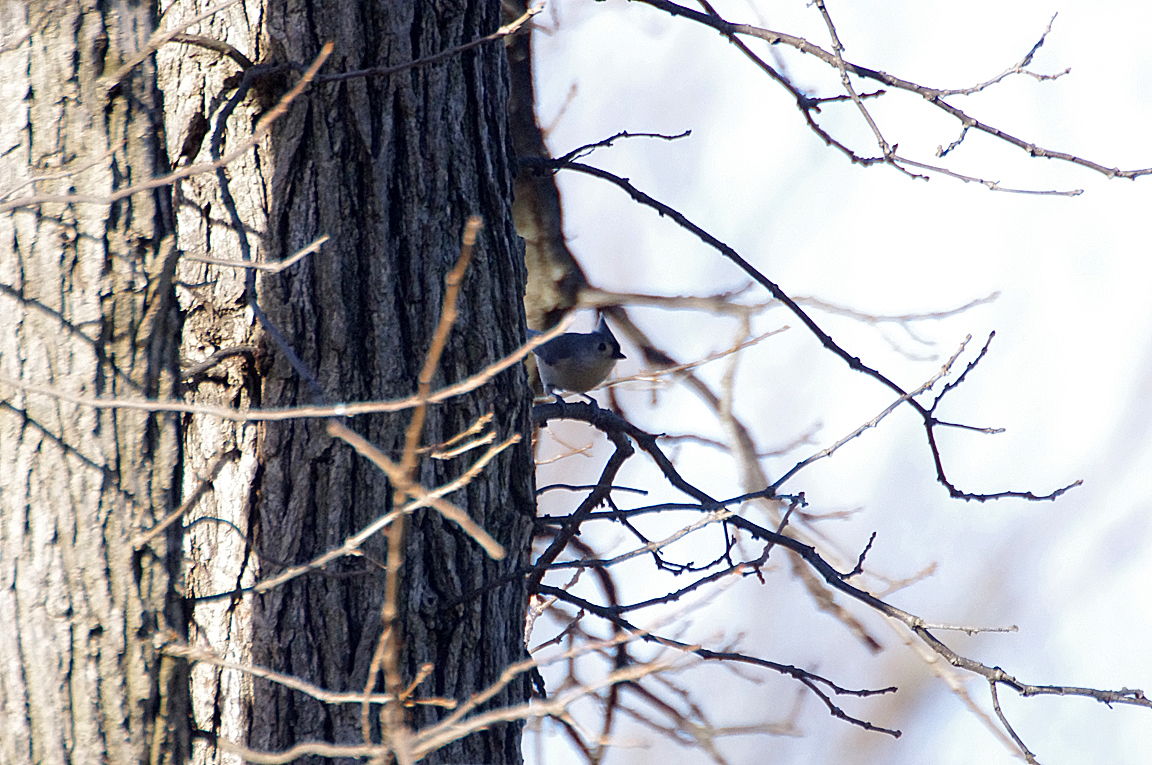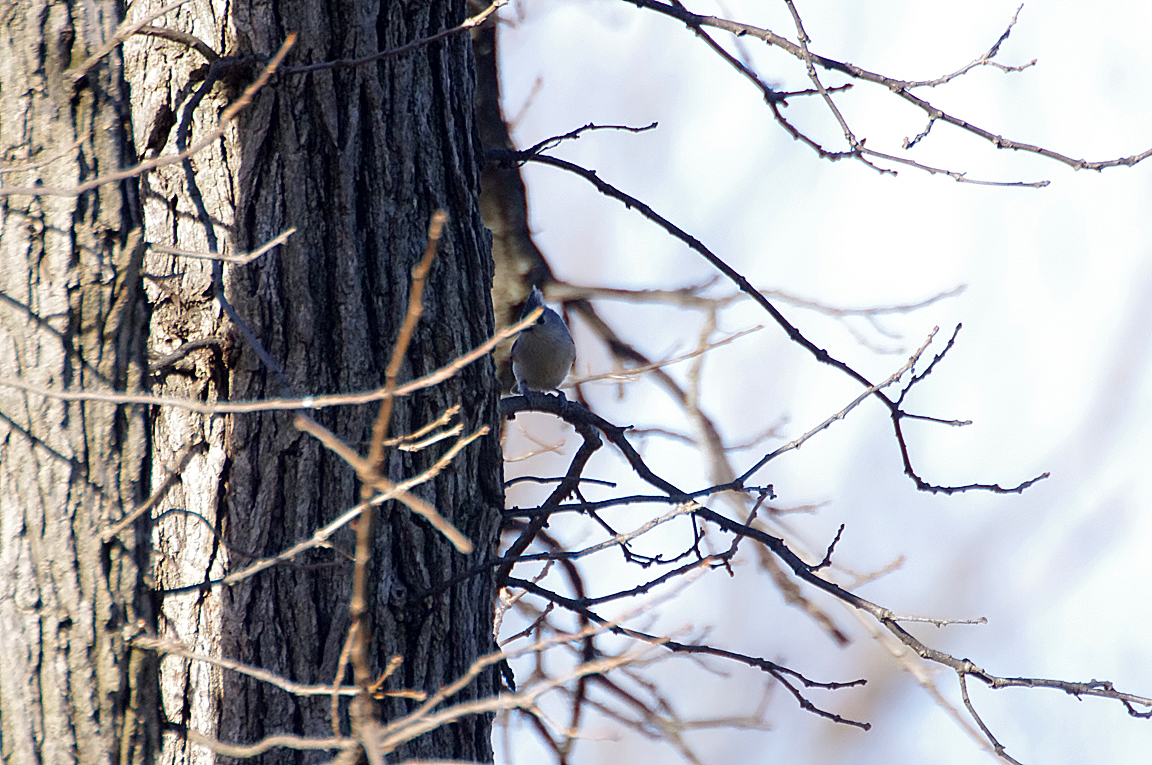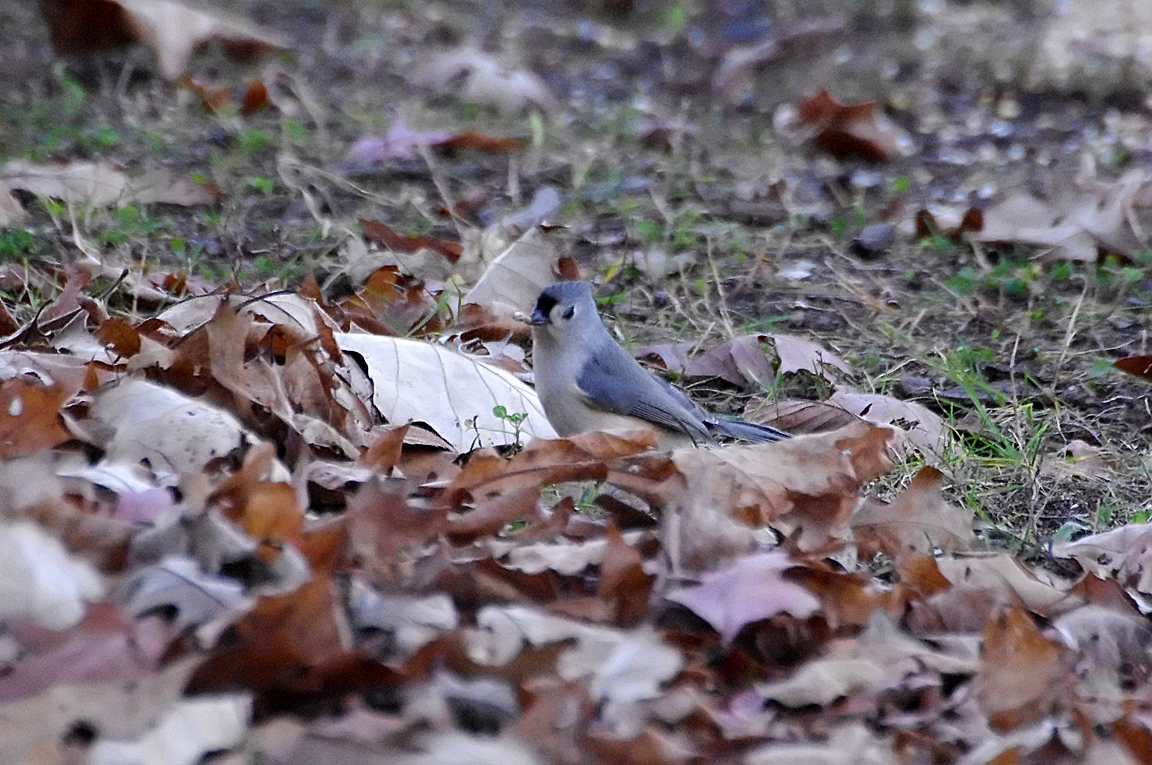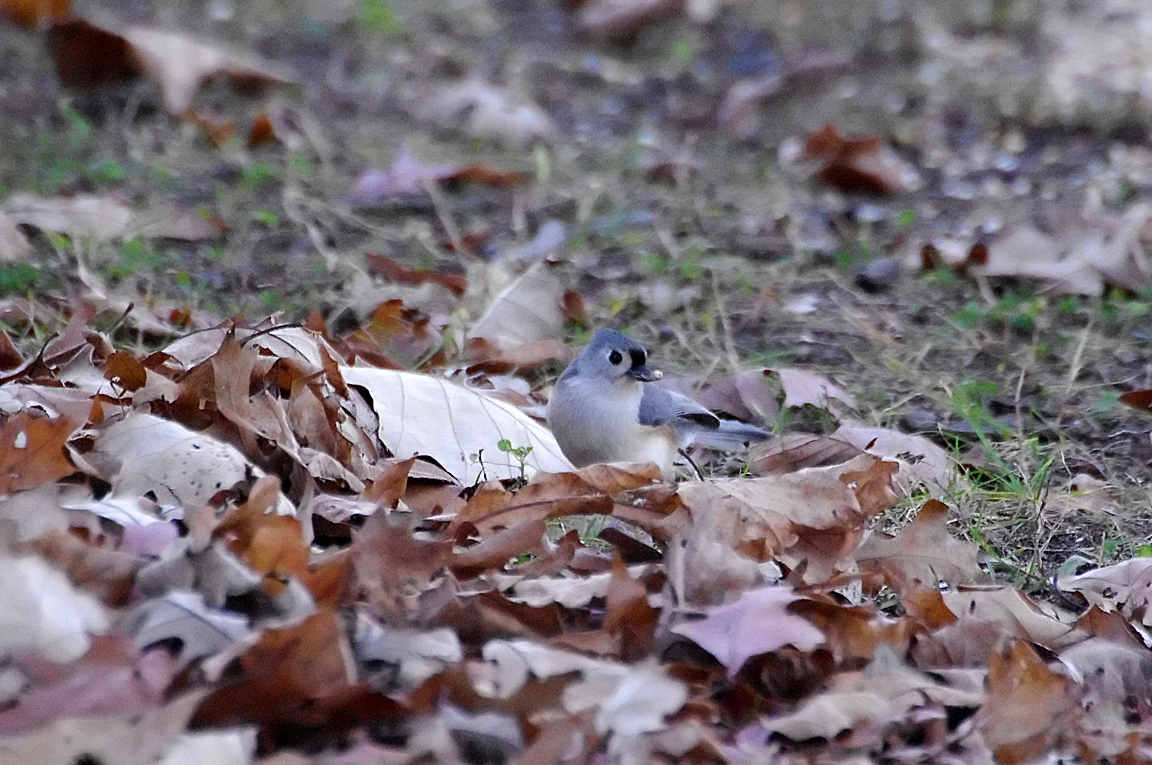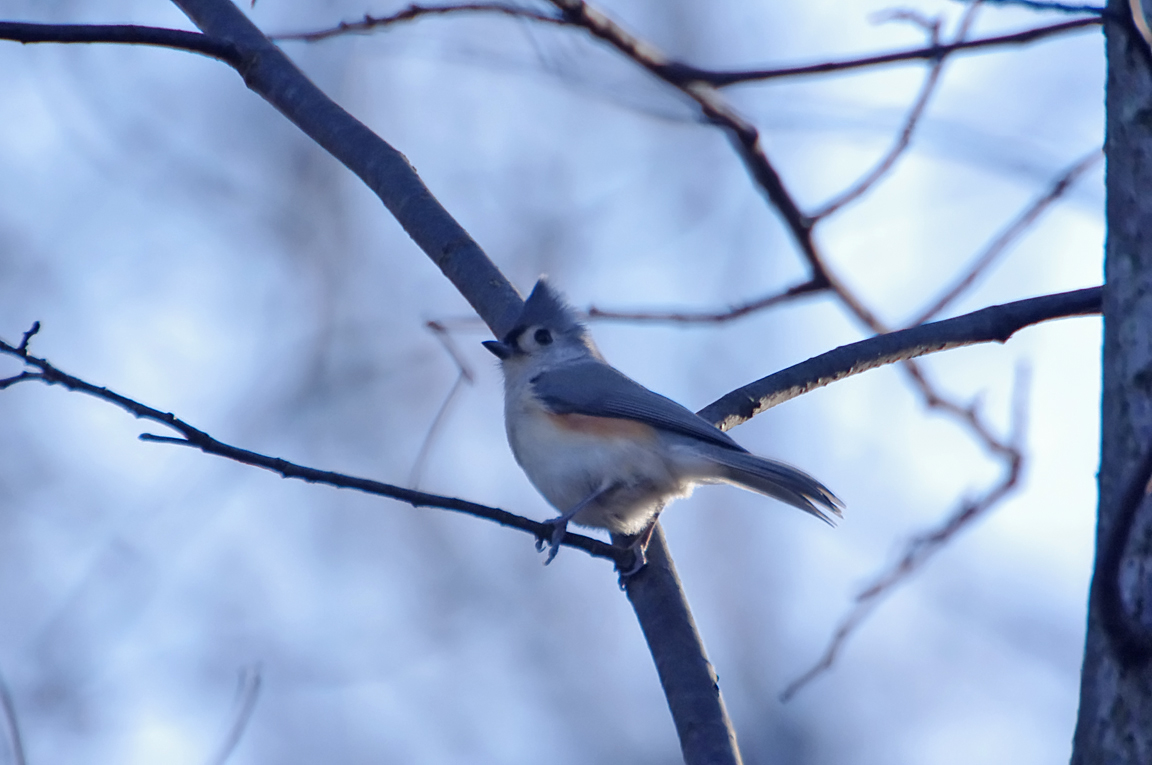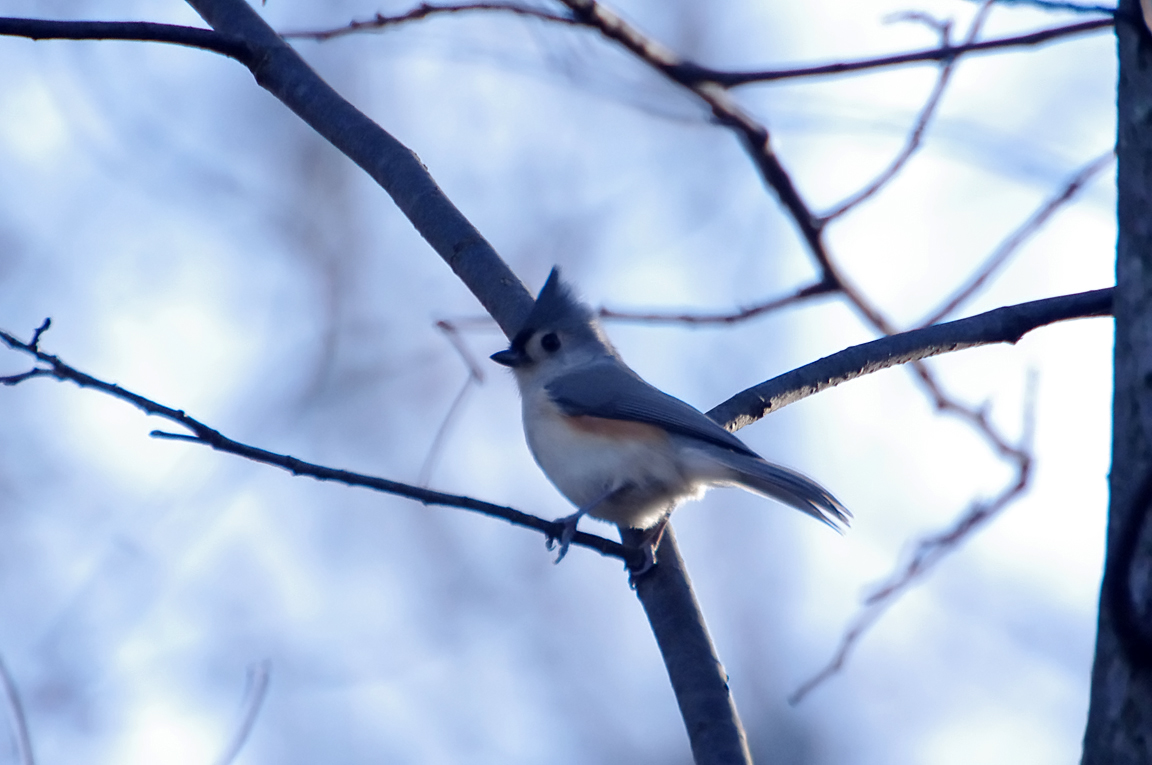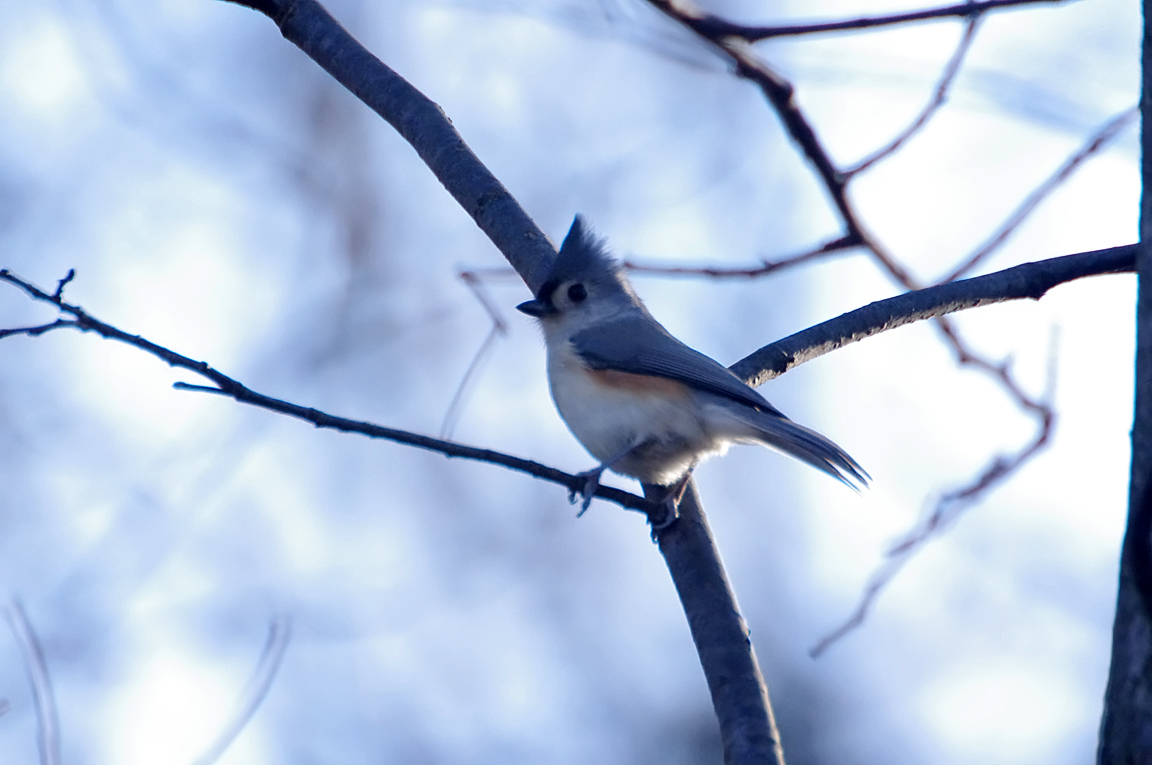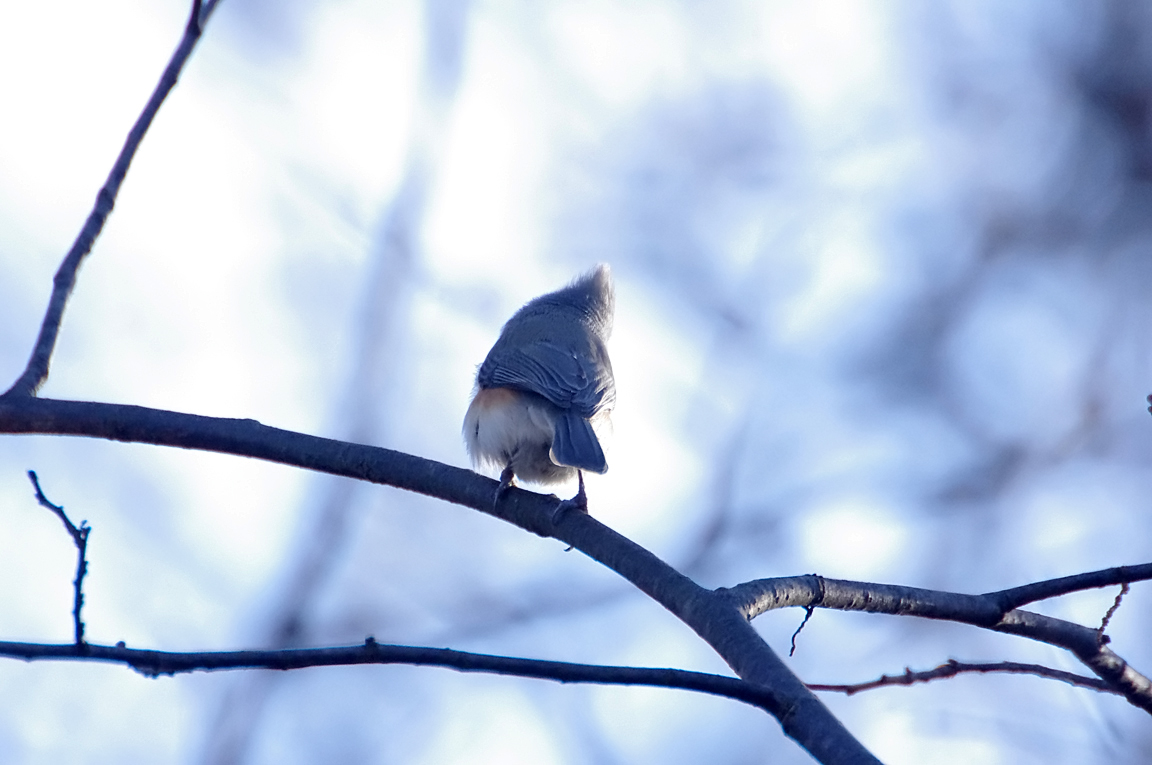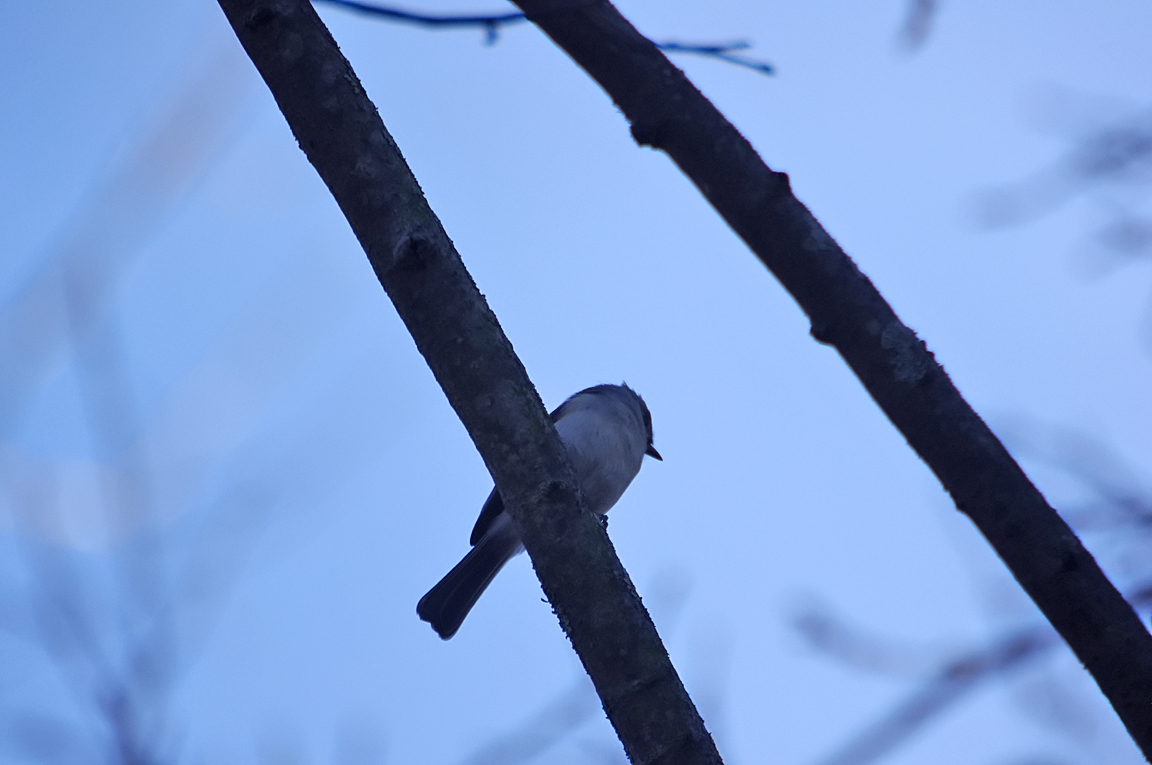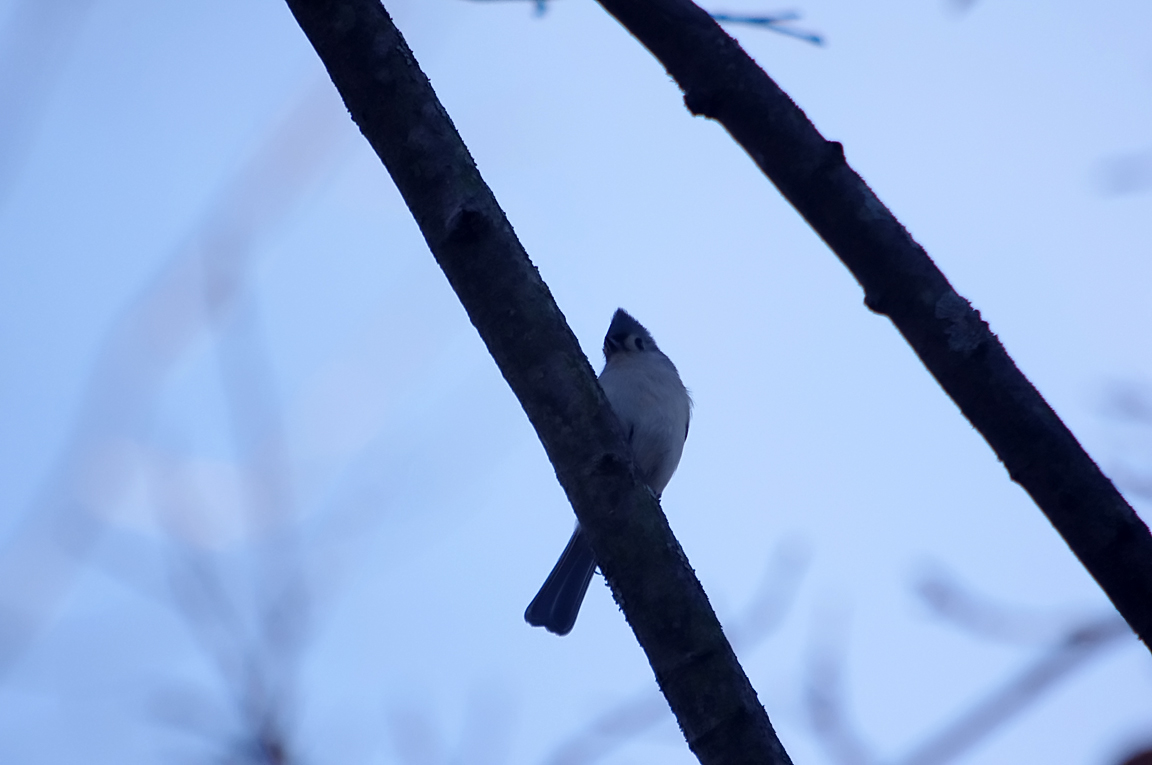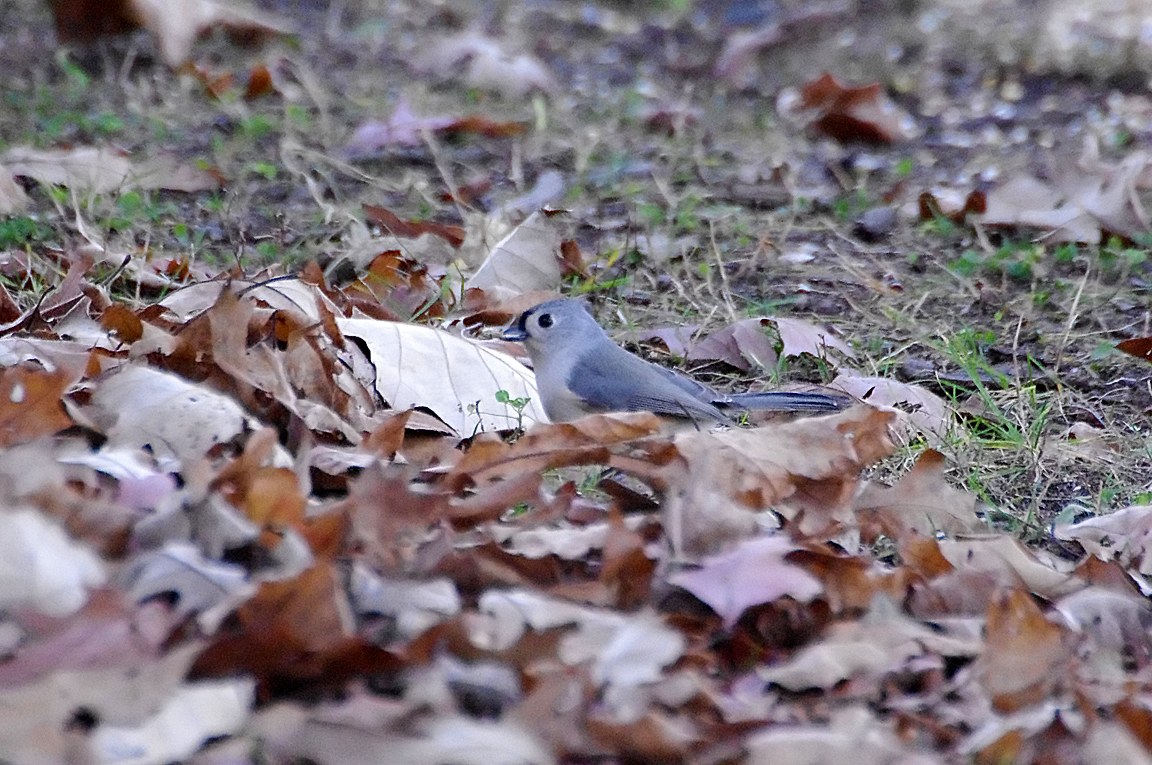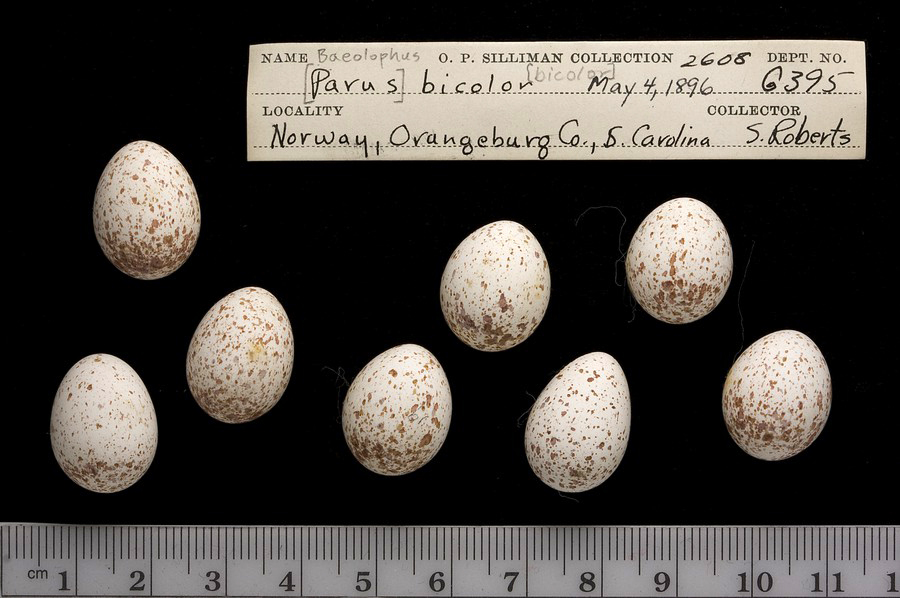|
|
|
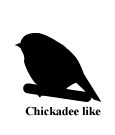 |
Tufted Titmouse
|
| Baeolophus bicolor | |
A little gray bird with an echoing voice, the Tufted Titmouse is common in eastern deciduous forests and a frequent visitor to feeders. The large black eyes, small, round bill, and brushy crest gives these birds a quiet but eager expression that matches the way they flit through canopies, hang from twig-ends, and drop in to bird feeders. When a titmouse finds a large seed, you'll see it carry the prize to a perch and crack it with sharp whacks of its stout bill.
Interesting Information
-
The Black-crested Titmouse of Texas and Mexico has at times been considered just a form of the Tufted Titmouse. The two species hybridize where they meet, but the hybrid zone is narrow and stable over time. They differ slightly in the quality of their calls, and show genetic differences as well.
-
Unlike many chickadees, Tufted Titmouse pairs do not gather into larger flocks outside the breeding season. Instead, most remain on the territory as a pair. Frequently one of their young from that year remains with them, and occasionally other juveniles from other places will join them. Rarely a young titmouse remains with its parents into the breeding season and will help them raise the next year's brood.
-
Tufted Titmice hoard food in fall and winter, a behavior they share with many of their relatives, including the chickadees and tits. Titmice take advantage of a bird feeder's bounty by storing many of the seeds they get. Usually, the storage sites are within 130 feet of the feeder. The birds take only one seed per trip and usually shell the seeds before hiding them.
-
Tufted Titmice nest in tree holes (and nest boxes), but they can't excavate their own nest cavities. Instead, they use natural holes and cavities left by woodpeckers. These species' dependence on dead wood for their homes is one reason why it's important to allow dead trees to remain in forests rather than cutting them down.
-
Tufted Titmice often line the inner cup of their nest with hair, sometimes plucked directly from living animals. The list of hair types identified from old nests includes raccoons, opossums, mice, woodchucks, squirrels, rabbits, livestock, pets, and even humans.
-
The oldest known wild Tufted Titmouse lived to be 13 years 3 months old.
Description
Adult Description
Size & Shape
Tufted Titmice look large among the small birds that come to feeders, an impression that comes from their large head and eye, thick neck, and full bodies. The pointed crest and stout bill help identify titmice even in silhouette.
-
Length Range: 17 cm (6.5 in)
-
Weight: 23 g (0.8 oz)
-
Size: 2. Small (5 - 9 in)
Color Pattern
Soft silvery gray above and white below, with a rusty or peach-colored wash down the flanks. A black patch just above the bill makes the bird look snub-nosed.
Sex Differences
Sexes Similar
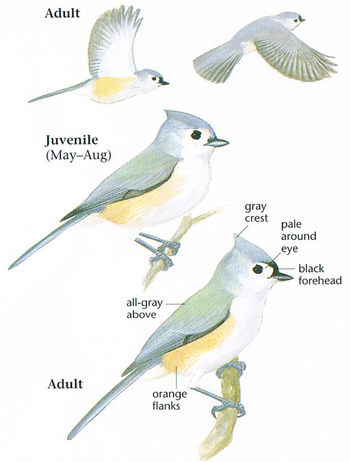
Photo taken from: The Sibley Field Guide by David Allen Sibley
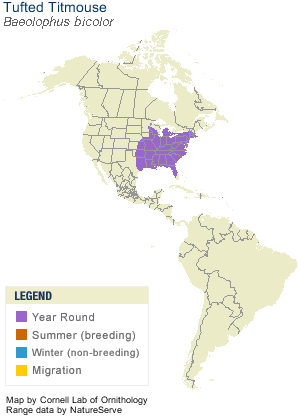
© 2003 Cornell Lab of Ornithology
|
Habitat |
|
Tufted Titmice live in deciduous woods or mixed evergreen-deciduous woods, typically in areas with a dense canopy and many tree species. They are also common in orchards, parks, and suburban areas. Generally found at low elevations, Tufted Titmice are rarely reported at elevations above 2,000 feet. |
|
Behavior |
|
Tufted Titmice flit from branch to branch of the forest canopy looking for food, often in the company of other species including nuthatches, chickadees, kinglets, and woodpeckers. When they find large seeds, such as the sunflower seeds they take from bird feeders, titmice typically hold the seed with their feet and hammer it open with their beaks. In fall and winter they often hoard these shelled seeds in bark crevices. These acrobatic foragers often hang upside down or sideways as they investigate cones, undersides of branches, and leaf clusters. They sometimes come all the way to the ground to hop around after fallen seeds or insects. Titmice are very vocal birds and are also quick to respond to the sounds of agitation in other birds, coming close to investigate or joining a group of birds mobbing a predator. |
|
Food |
|
Tufted Titmice eat mainly insects in the summer, including caterpillars, beetles, ants and wasps, stink bugs, and treehoppers, as well as spiders and snails. Tufted Titmice also eat seeds, nuts, and berries, including acorns and beech nuts. Experiments with Tufted Titmice indicate they always choose the largest seeds they can when foraging. |
Taxonomy
| Kingdom: | Animalia |
| Phylum: | Chordata |
| Subphylum: | Vertebrata |
| Class: | Aves |
| Order: | Passeriformes |
| Family: | Paridae |
| Genus: | Baeolophus |
| Species: | Baeolophus bicolor |
| Subspecies: | Baeolophus bicolor |
| Baeolophus bicolor paloduro |
Similar Species |
|
|
Bird Sound |
|
Titmouse calls are nasal and mechanical. A scratchy, chickadee-like tsee-day-day-day is the most common. Tufted Titmice also give fussy, scolding call notes and, when predators are sighted, a harsh distress call that warns other titmice of the danger. |
|
Eggs look like this |
|
Photo taken from: ARCTOS Collaborative Collection Management Solution |
